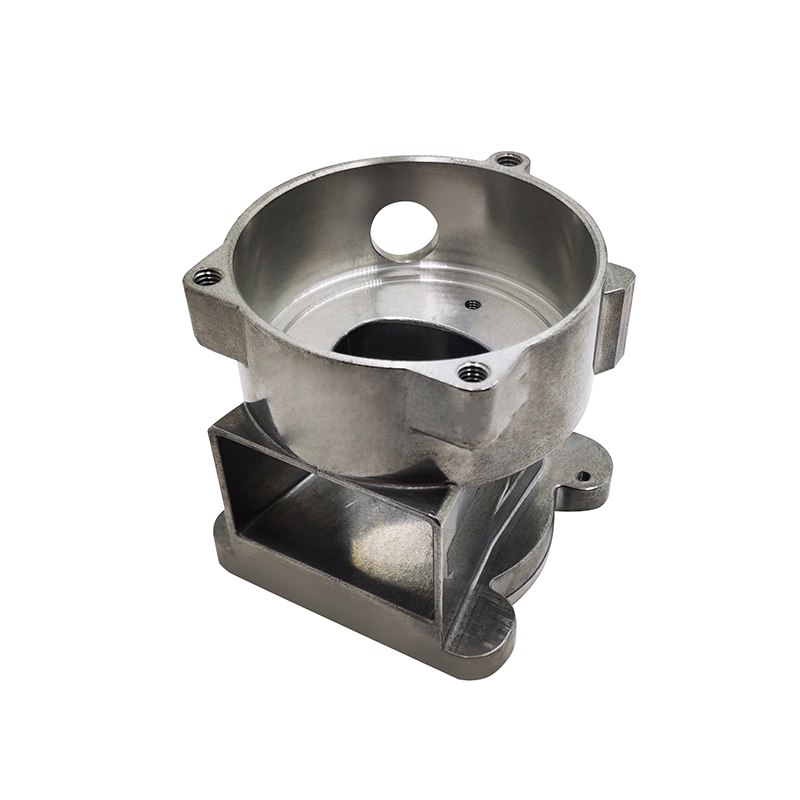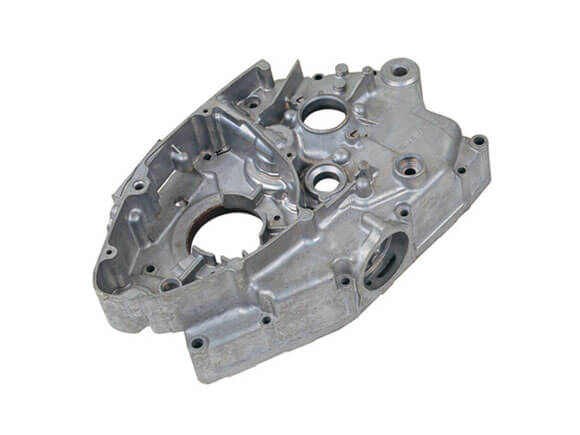The secrets behind efficient aluminum casting and foundry operations
Wiki Article
The Significance of Aluminum Casting in High-Quality Production Techniques
Light weight aluminum casting has become a foundation in top quality production methods. Its light-weight buildings and extraordinary stamina make it a preferred choice for different sectors. Suppliers benefit from its style adaptability and marginal waste generation. As the need for advanced products grows, understanding the nuances of light weight aluminum spreading ends up being essential. This exploration exposes not only its benefits yet additionally the evolving modern technologies that form its future in production. What lies ahead for this cutting-edge procedure?
The Advantages of Light Weight Aluminum Spreading
Various casting methods exist, aluminum spreading stands out due to its countless benefits. Among the key advantages is its light-weight nature, which substantially lowers transportation prices and energy intake in applications. Aluminum also exhibits exceptional deterioration resistance, making it excellent for resilient components in varied settings. The casting process enables for intricate designs, allowing producers to produce complex forms with high precision and marginal waste. Additionally, aluminum has exceptional thermal and electrical conductivity, making it ideal for a series of industrial applications. The high strength-to-weight ratio enhances the architectural stability of cast items, supplying durability without the included mass. Light weight aluminum casting can be adapted to different strategies, such as sand casting or pass away spreading, which broadens its applicability throughout markets. In general, these advantages placement aluminum spreading as a recommended option in modern manufacturing, adding to efficiency and sustainability.Trick Applications of Aluminum Spreading
Light weight aluminum casting locates considerable applications throughout different industries due to its helpful residential properties. In the vehicle field, it is extensively utilized for producing engine blocks, transmission situations, and wheels, promoting lightweight styles that improve gas performance. The aerospace market additionally takes advantage of light weight aluminum casting, where elements such as braces and housings are produced to satisfy rigorous weight and strength demands.In addition, the electric field employs aluminum casting for generating housings and heat sinks, which are necessary for efficient thermal management in digital tools. Aluminum Foundry. The building sector makes use of aluminum castings for building components, home window frameworks, and components, adding to both visual appeals and toughness
Last but not least, the durable goods market incorporates aluminum casting in items like pots and pans and sporting equipment, leveraging the material's toughness and corrosion resistance. On the whole, the convenience of light weight aluminum spreading makes it an essential process in meeting varied manufacturing requires across multiple areas.
The Refine of Light Weight Aluminum Spreading
Casting light weight aluminum entails numerous well-defined actions that change resources right into finished components. The procedure begins with melting aluminum in a heating system, reaching temperature levels around 660 degrees Celsius. As soon as thawed, the liquid aluminum is poured right into a mold, which takes the form of the desired part. Different mold and mildew kinds, consisting of sand, long-term, and financial investment molds, are utilized relying on the application.
After pouring, the light weight aluminum cools down and solidifies, forming a rough spreading. This casting undertakes a series of completing processes, such as machining, to accomplish accurate measurements and surface area quality. Quality assurance steps are implemented throughout to guarantee the stability and toughness of the final product. As soon as all procedures are complete, the completed light weight aluminum parts await different applications, showcasing the versatility and effectiveness of light weight aluminum spreading in production techniques. Each action is essential in achieving premium outcomes, making this process necessary in making industries.
Innovations in Light Weight Aluminum Casting Technology
Current innovations in light weight aluminum spreading innovation have actually changed production processes substantially. Innovations such as advanced casting methods, integration of smart manufacturing, and sustainability practices are improving the sector. These growths not just boost performance but also address environmental concerns, paving the way for a more sustainable future in light weight aluminum casting.Advanced Spreading Approaches
As producers seek better effectiveness and sustainability in production, cutting-edge innovations in light weight aluminum casting innovation have arised to meet these demands. Advanced casting approaches, such as die spreading, investment casting, and sand casting, have actually been fine-tuned to improve precision and lower waste. Pass away casting enables faster manufacturing rates and tighter tolerances, making it perfect for high-volume items. Investment spreading, understood for its capability to generate complicated geometries, enables detailed layouts with exceptional surface coatings. At the same time, sand casting remains prominent for its adaptability and cost-effectiveness, particularly in low-volume applications. These techniques not just improve the top quality of aluminum elements but additionally add to minimized power consumption, lining up with market objectives for sustainable methods in making procedures.Smart Production Integration
How can wise production assimilation change aluminum spreading modern technology? By incorporating sophisticated technologies such as the Web of Things (IoT), fabricated intelligence (AI), and information analytics, wise production boosts performance and precision in light weight aluminum spreading processes. Real-time monitoring of equipment and assembly line permits immediate changes, minimizing waste and downtime. Predictive maintenance powered by AI reduces devices failures, making sure regular top quality. Additionally, data analytics can enhance casting designs and specifications, leading to better product application and lowered cycle times. These technologies promote smooth interaction in between operators and machines, promoting a much more active manufacturing setting. On the whole, clever production assimilation markedly elevates the capacities of aluminum casting, advertising higher quality outcomes and more responsive production methods.Sustainability Innovations
While the aluminum spreading sector deals with increasing stress to take on lasting methods, developments are emerging that significantly minimize its ecological influence. Advanced reusing techniques currently make it possible for suppliers to utilize approximately 95% recycled light weight aluminum, significantly lowering power usage and waste generation. In addition, the integration of low-emission modern technologies, such as electric melting furnaces, minimizes greenhouse gas discharges connected with traditional casting approaches. Furthermore, the development of environment-friendly finishes and binders replaces unsafe chemicals, improving workplace security and minimizing environmental air pollution. These developments not just line up with global sustainability objectives yet also boost the overall effectiveness and top quality of light weight aluminum products. As the market evolves, these improvements will play a vital role in cultivating a much more lasting future for aluminum casting.Contrasting Light Weight Aluminum Casting With Other Techniques
In comparing aluminum casting with various other manufacturing approaches, several critical variables emerge. Cost performance, strength and longevity, and style adaptability offer as essential metrics for assessment (Aluminum Casting Company). Examining these facets can provide insights right into the benefits and constraints of light weight aluminum spreading in different production contextsPrice Effectiveness Evaluation
Price performance stays an extremely important consideration in making procedures, specifically when reviewing light weight aluminum spreading against different approaches. Aluminum spreading commonly offers a reduced preliminary investment contrasted to methods such as steel forging or machining, which call for even more costly and fancy equipment. Additionally, light weight aluminum's light-weight nature can decrease transportation prices and power consumption throughout manufacturing. The capacity to develop complex forms with marginal waste better improves its cost-effectiveness, as less material is discarded throughout the manufacturing procedure. Moreover, light weight aluminum spreading normally allows for quicker manufacturing cycles, causing reduced labor costs and faster turn-around times. To sum up, when comparing price effectiveness, aluminum spreading frequently arises as a desirable alternative, using producers economic advantages together with top notch result.Stamina and Resilience
Toughness and sturdiness are critical aspects when reviewing manufacturing techniques, specifically in the context of aluminum casting. Contrasted to various other approaches such as plastic shot molding and steel manufacture, aluminum casting uses unique advantages. The fundamental homes of light weight aluminum, combined with the casting process, lead to light-weight yet robust components that can stand up to substantial anxiety and ecological variables. Unlike plastics, which might weaken over time, light weight aluminum preserves its honesty and performance under high temperatures and pressures. Additionally, while steel elements can be much heavier and susceptible to corrosion, light weight aluminum stands up to rusting, read more boosting longevity. This mix of stamina and longevity makes light weight aluminum casting a preferred selection for industries requiring reputable efficiency popular applications, such as aerospace and automobile industries.Design Flexibility Comparison

The Future of Aluminum Spreading in Manufacturing
How will innovations in innovation form the future of aluminum spreading in manufacturing? The combination of automation and expert system is expected to revolutionize aluminum spreading procedures. These innovations can enhance precision and performance, decreasing waste and production expenses. Additionally, the development of 3D printing techniques permits for fast prototyping and tailored styles, enabling producers to react promptly to market needs.Sustainability is also a vital emphasis, with technologies targeted at reducing power consumption and reducing ecological influence. Techniques such as die casting and financial investment spreading are evolving to include recycled aluminum, promoting a round economic situation.
Developments in products scientific research might lead to the growth of lighter, more powerful light weight aluminum alloys that can increase the applications of light weight aluminum spreading across numerous markets. Generally, the future of light weight aluminum casting in manufacturing will likely be characterized by boosted versatility, sustainability, and effectiveness, positioning it as an important component of modern-day manufacturing methods.
Often Asked Questions
How Does Light Weight Aluminum Spreading Effect Environmental Sustainability?
Aluminum casting positively influences ecological sustainability by promoting recycling, decreasing energy intake compared to other steels, and decreasing waste. Its light-weight properties additionally cause reduce emissions throughout transport, supporting greener practices in various sectors.What Are the Cost Implications of Light Weight Aluminum Casting?
Light weight aluminum casting frequently involves higher initial prices due to product and handling costs. Its longevity and light-weight buildings can generate long-lasting cost savings by lowering maintenance and transport costs, ultimately stabilizing the monetary effects for manufacturers.Can Light Weight Aluminum Spreading Be Recycled Effectively?
Aluminum spreading can be reused effectively, as the material preserves its properties throughout the recycling process. This enables the manufacturing of high-quality components while reducing waste and minimizing power intake connected with new aluminum production.What Precaution Are Needed During Aluminum Casting?
Safety measures during light weight aluminum spreading consist of making use of individual safety tools like goggles and gloves, making certain proper ventilation, maintaining equipment, and following protocols for handling liquified steel to prevent burns, breathing threats, and various other possible mishaps.
How Does Aluminum Casting Affect Product Design Flexibility?
Light weight aluminum spreading boosts item layout adaptability by making it possible for detailed shapes and lightweight structures. This strategy enables designers to explore innovative configurations, resulting in functional applications throughout different markets while preserving strength and resilience in the final products.Light weight aluminum spreading can be adapted to various strategies, such as sand spreading or die spreading, which broadens its applicability across sectors. As soon as all procedures are full, the ended up light weight aluminum elements are ready for numerous applications, showcasing the convenience and efficiency of aluminum spreading in production techniques. As manufacturers look for higher efficiency and sustainability in manufacturing, innovative improvements in aluminum spreading innovation have arised to satisfy these needs. Unlike plastic injection molding, which might need extensive tooling changes for design adjustments, aluminum spreading can fit alterations much more conveniently during the manufacturing cycle. Improvements in materials scientific research might lead to the advancement of lighter, more powerful aluminum alloys that can expand the applications of light weight aluminum spreading throughout different sectors.
Report this wiki page